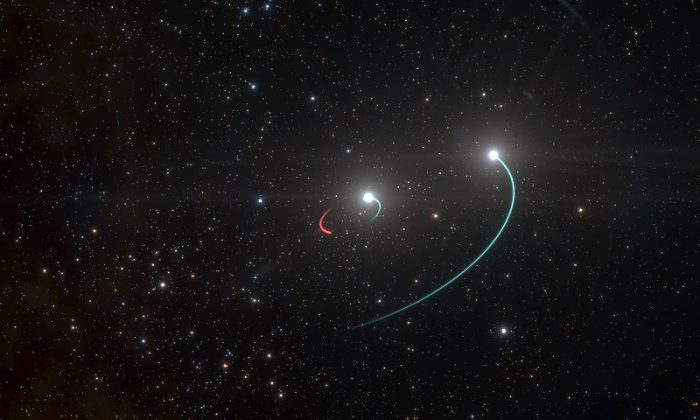Welcome back to our Science Odyssey Contest event, where we're posting STEM articles from May 2 to May 17. To enter the contest, you can find details at the bottom of this post.
Recently, we've spent a bit of time talking about black holes. Why? Because they're fascinating! And vital to the health of our universe, too.
But we've also focused mainly on supermassives—black holes that are millions, even billions of times the mass of our Sun. But there's a whole other, smaller category out there called stellar mass black holes. And they are sneaky!
Check this out: the recently discovered HR 6819 black hole is practically in our own backyard!
Difficult to see
Since you can't actually see a black hole, astronomers must rely on how it is affecting objects around it to find one. (Getty Embed)
Okay, so this thing isn't actually in our backyard. It is about 1,000 light years away, which is hardly just next door, but it is the closest black hole to Earth ever found. And a reminder of just how easily one of these things can hide in plain sight. Especially when they're not actively 'eating' anything.
As we saw in a post last week about a pair of enormous supermassive black holes, the gases that spiral into a black hole makes it glow. But if nothing is actually being 'consumed' by the black hole, how do you see something that gives off no light at all?
Triple tango
There are a few ways, but in the case of HR 6819 the giveaway was not one, not two, but three stars orbiting around it—a trio dancing tightly around total darkness. In cases like this, that point of darkness almost certainly has to be a black hole.
HR 6819 is curious in that it is not only the closest black hole that we've every found, it's also the perhaps the smallest. Astronomers estimate that it is about 4.2 solar masses, or 4.2 times the mass of the Sun. This is the very lower limit of what can become a black hole — any smaller and a star would likely become some type of dwarf after dying.
Introduce yourself
So there you have it. Not exactly next door, not huge, and definitely not a threat. But still exciting! To get to know this new neighbour check out these videos.
This one zooms in on the part of space HR 6819 is located in—even upon zooming in, what you'll see is the collective light of the three stars appearing as one point of light.
Then, this video shows an animation of what the system might look like if you got even closer.
Contest alert
Don't miss our Science Odyssey Contest. Click HERE TO ENTER.

 An illustration of the unique triple star system HR 6819 that is circling a small black hole. (Wikimedia Commons/ESO/L. Calçada)
An illustration of the unique triple star system HR 6819 that is circling a small black hole. (Wikimedia Commons/ESO/L. Calçada)










Awesome 🙂
scary 😯 😯
The second video is kinda hard to understand.